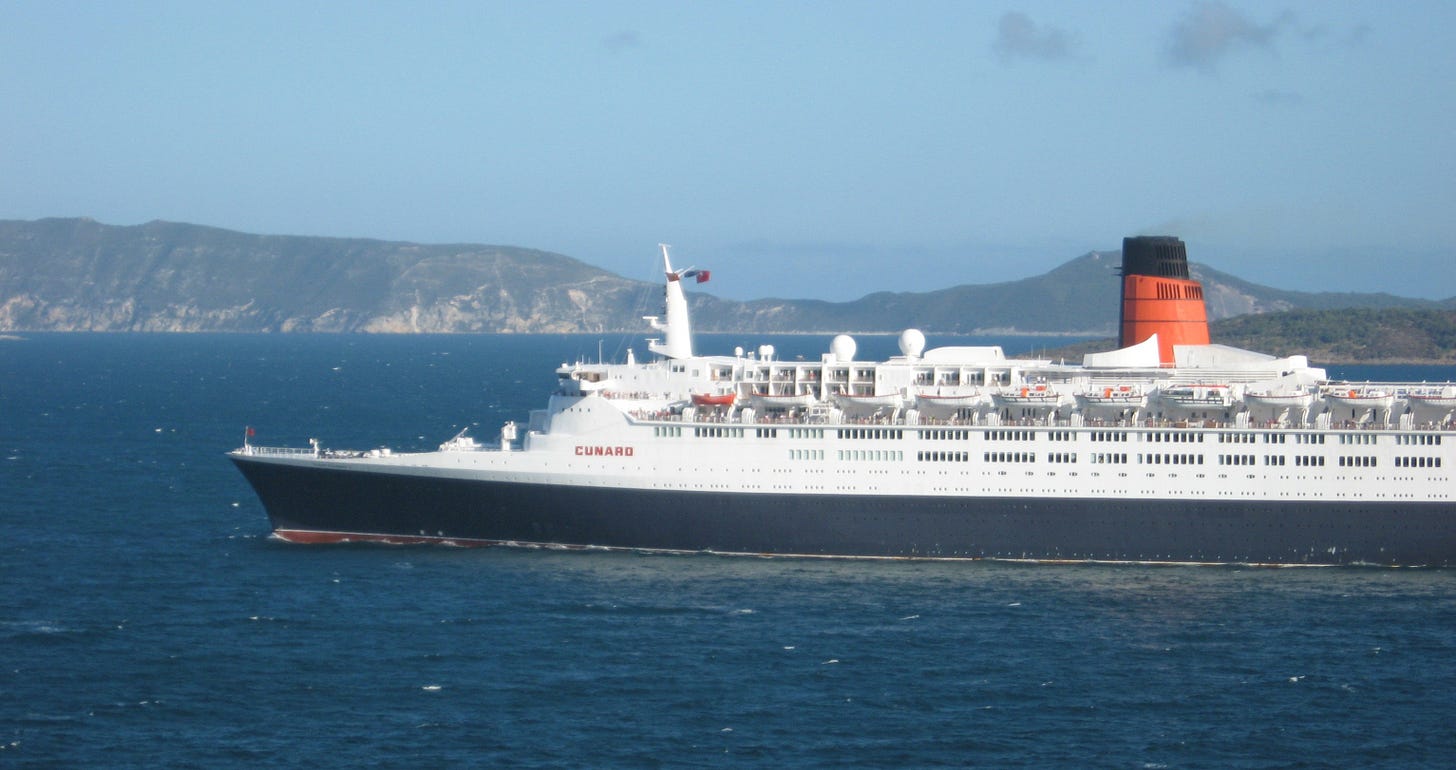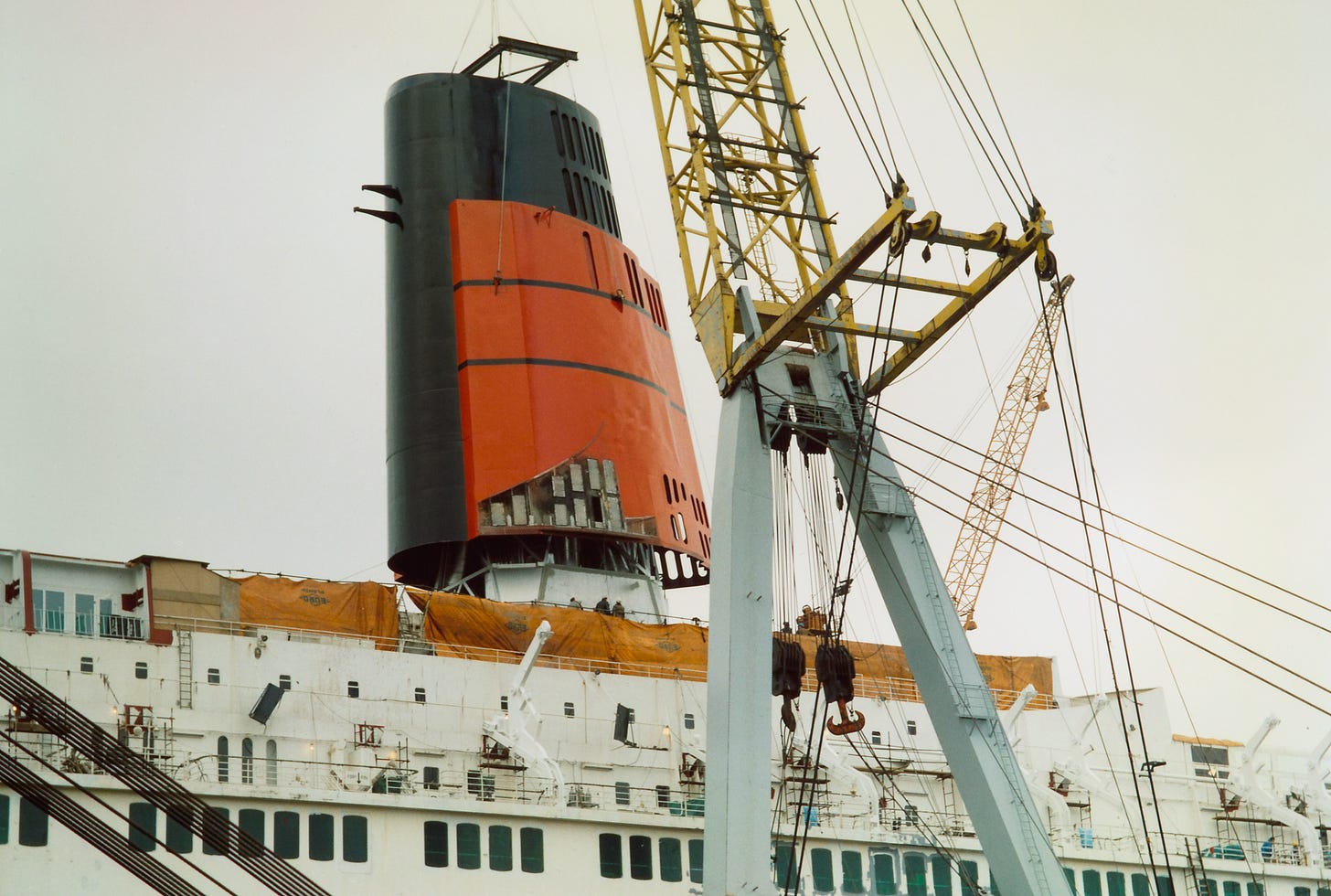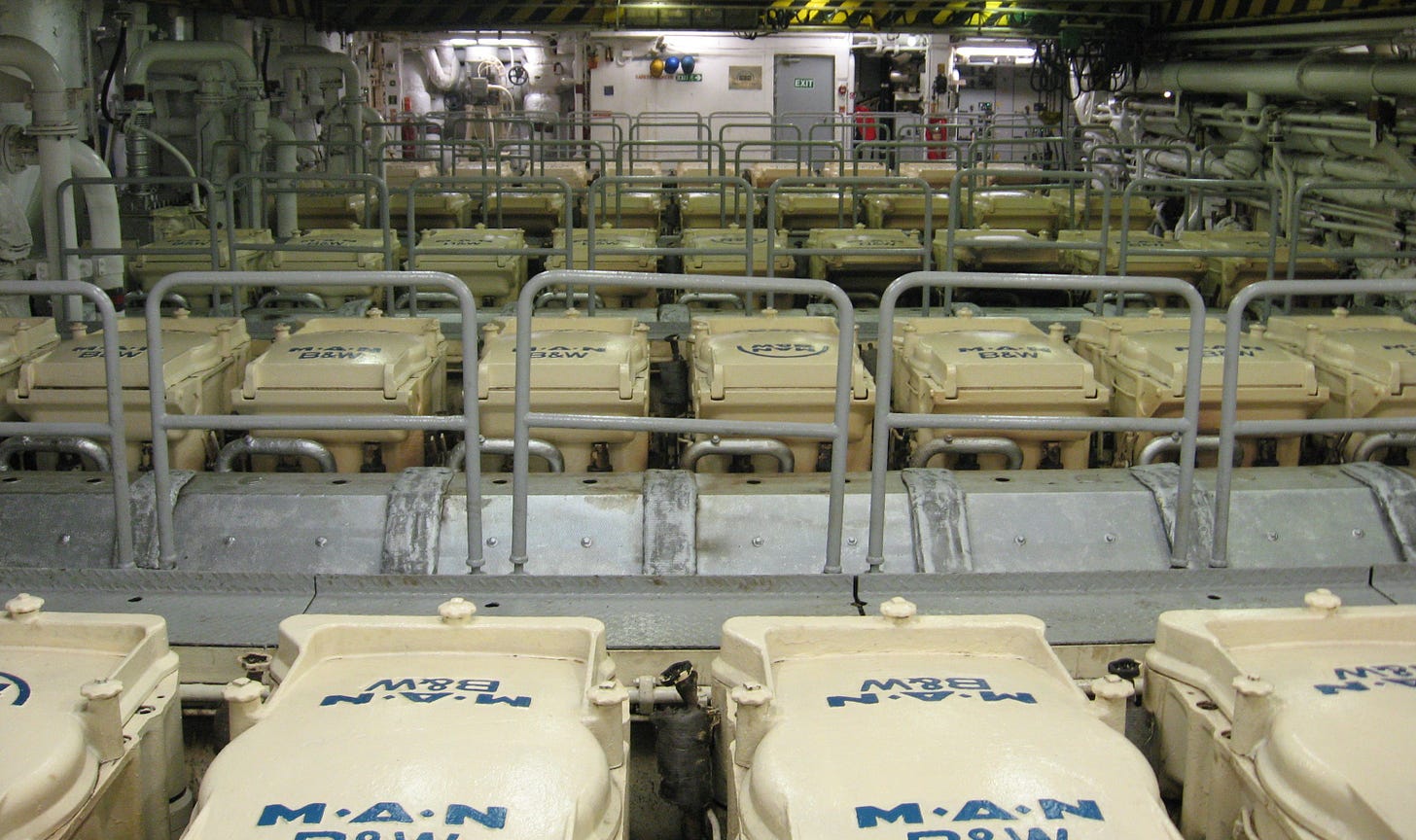The Unstoppable Power of a Floating City Reborn
How Cunard gave QE2 the largest marine heart transplant of its time.
The legend of the Queen Elizabeth 2 (QE2) is defined by many things: her sleek profile, her transatlantic grace, and her unmatched service. But behind the glamour lay a story of engineering ingenuity and survival.
For nearly 40 years, the QE2 was not just a ship, but a living tribute to maritime innovation. And one of the greatest chapters of this story is undoubtedly her 1986-87 refit, where she was given a new lease on life.
This wasn't a simple overhaul; it was a radical transformation from a steamship to a cutting-edge diesel-electric vessel, a change that secured her legacy as one of the fastest and most powerful ocean liners ever built.
A New Heart
The QE2's original steam boilers and turbines were a persistent source of trouble. Problems had emerged during her initial sea trials and continued to plague the ship into the early 1980s, leading to the cancellation of voyages and jeopardising her reputation.
To solve this problem once and for all, Cunard made a bold decision, to replace the entire propulsion system with a modern diesel-electric power plant.
This monumental project was carried out at the Lloyd Werft shipyard in Bremerhaven, Germany. The extensive refit involved the removal of the old steam turbine plant, a process that saw over 4,700 tons of machinery scrapped. It was removed through the large central hole left in the ship when the original funnel was detached.
In place of the steam engines, a new MAN B&W diesel electric system was installed. This modernisation was not only about reliability; it was also a clever financial move, projected to save Cunard millions a year in fuel expenses.
To accommodate the extensive work, the QE2 was taken out of service from November 1986 to April 1987. During this time, Cunard’s Sagafjord and Vistafjord stepped in to handle her scheduled transatlantic crossings and world cruises.
The new propulsion system was built around nine MAN B&W diesel electric engines. Each engine, a nine-cylinder supercharged behemoth, was around the size of a double-decker bus.
The plant was also equipped with two new propulsion motors and a set of new variable-pitch propellers, while parts of the passenger accommodation were also refreshed during the dry-dock period.
Power Behind the Propellers
In a diesel-electric ship, power is generated by diesel engines and then converted into electricity.
The QE2’s nine engines were distributed between two immense engine rooms, with four in the forward room and five in the aft. The original design, which was intended for large steam turbines, provided an unusual amount of space above the new power plant, offering a unique overhead view not typically seen.
Combined, the nine engines generated 94.5 megawatts of electricity. Cunard boasted at the time, that this immense output was enough to power a city the size of Southampton.
Around 9 megawatts were directed to the ship's hotel services, through massive liquid-cooled transformers. This allowed lighting, heating, air-conditioning, elevators, refrigeration, and the like to operate. Given 9 megawatts was such a small portion of QE2’s total output, when in port, just one of the engines could supply all the power needed for these services.
The majority of the power was channelled to the ship's propulsion. This was achieved via two gigantic marine motors built by GEC England. Each motor, weighing 400 tons and rated at 44 megawatts, was so powerful it was considered the most potent marine motor ever constructed at the time. There was one motor for each of the two propeller shafts.
An Ingenious System of Control
The QE2's propeller shafts, each stretching 229 ft (70 metres) in length, were connected to five-bladed controllable-pitch propellers. A key feature of this system was that the propeller shafts rotated at a constant speed, either 72 revolutions per minute (RPM) when entering or exiting port or 144 RPM at sea.
So, if the shaft's rotation didn't change, how did the ship alter her speed?
That was achieved by adjusting the angle of the propeller blades. By changing the pitch of the blades, the crew could precisely control the ship’s speed, a technology that remains in use on many modern vessels.
The system also provided a remarkably efficient way to reverse. Unlike older ships that had to reverse engine direction, or funnel steam through dedicated reverse turbines, from 1987 the QE2 simply altered the pitch of her propeller blades. This meant that the propeller shaft never changed direction, and allowed QE2 to go from her top speed to a complete stop in 3 minutes and 38 seconds.
To aid with manoeuvring in port, the QE2 was also equipped with two bow thrusters. Powered by the same diesel-electric plant, these thrusters gave her extra control, though modern cruise ships today often have three or four, as well as stern thrusters.
The QE2 did, however, have an advantage with four stabiliser units, compared to the two found on most contemporary ships. The additional pair was a vital feature for navigating the turbulent Atlantic, a design element also carried over to the newer Queen Mary 2.
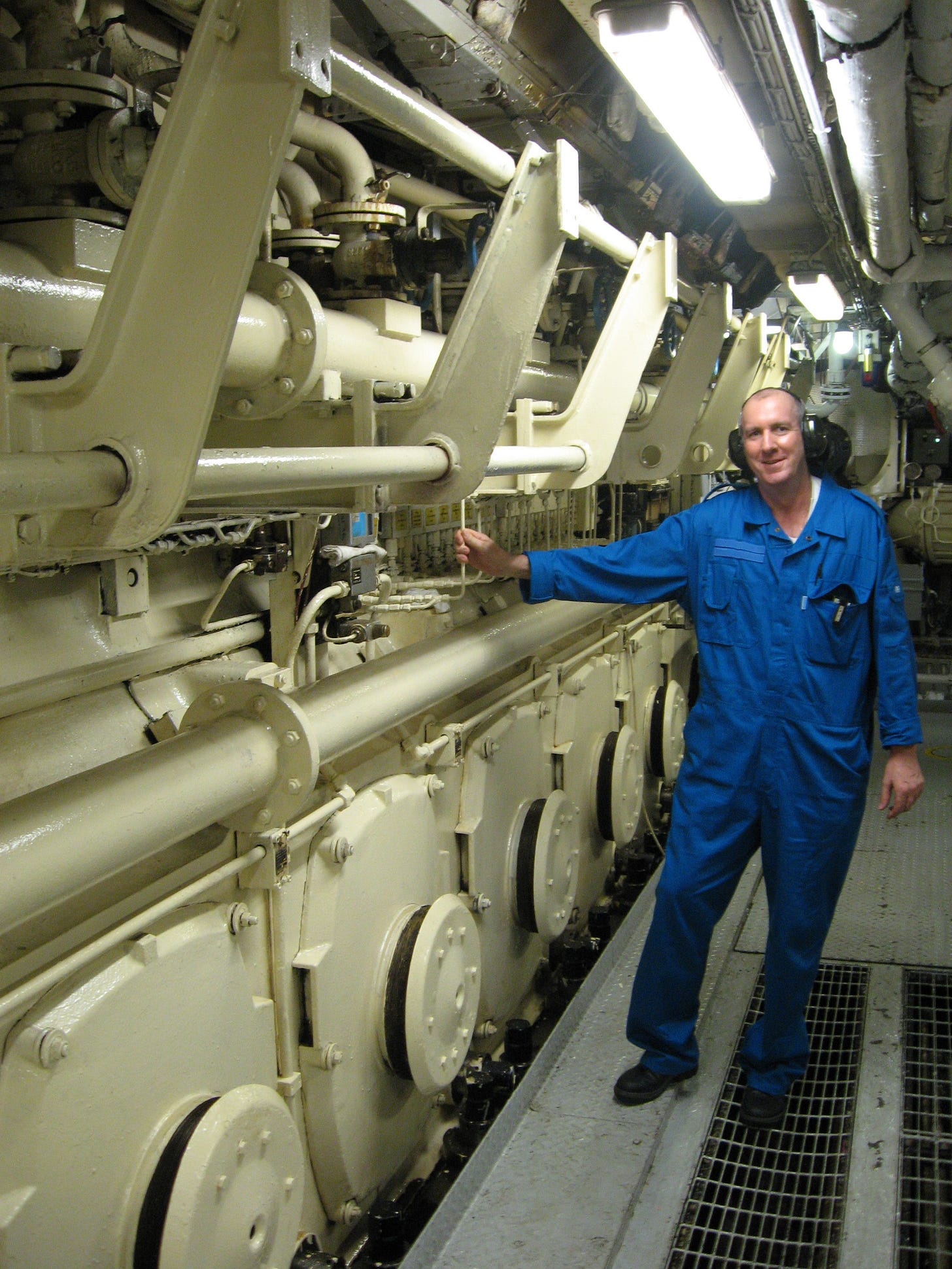
Ready for the Future
After the extensive refit, sea trials were conducted in the North Sea. The QE2 not only performed well, but reached a top speed of 34 knots, surpassing her previous steam turbine record.
The new system was also way more efficient. It included an advanced energy recapture system that used heat recovery boilers on each diesel exhaust pipe. The heat was used to generate steam for the kitchens, central heating, and water heating, as well as for the commercial laundry.
The engines also supplied power for the immense refrigeration areas, seven air conditioning compressors, 186 pumps, and 178 industrial ventilation fans throughout the vessel.
With her new machinery, modernised interiors, and a larger funnel, the ship re-entered commercial service in April 1987, ready to serve for another two decades.
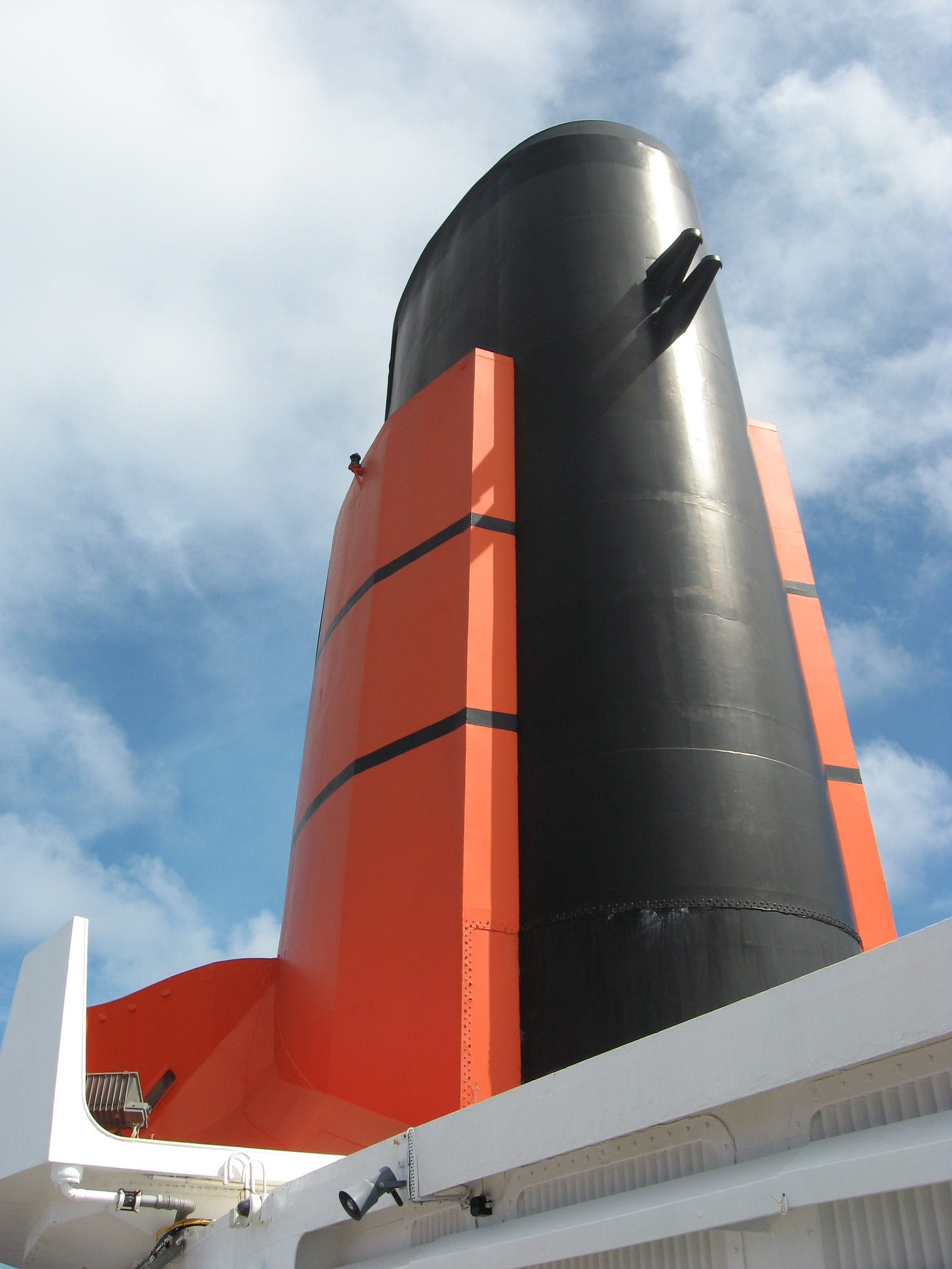
The QE2's powerful diesel-electric plant continued to serve the ship faithfully until her retirement in 2008, with plenty of life left in it. After she arrived in Dubai, it continued to power the ship in ‘warm layup’ until 2012, when it finally fell silent for the last time.


